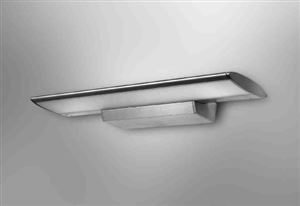Home » Hospital & Durable Medical Equipment » Hospital Lighting Options For Patient Rooms & Medical Areas » Hospital Lighting Options For Patient Rooms & Medical Areas
Hospital Lighting Options For Patient Rooms & Medical Areas

LED Uptown Patient Room Overbed Lighting
Retail Price: $493.59
Your Price: $379.69
 Unit: single
Unit: single

LED 3ft Long Wall Mounted Patient Room Light w/ Controller
Retail Price: $1,478.72
Your Price: $1,110.11
 Unit: single
Unit: single

LED Opulent Patient Room Overbed Light
Retail Price: $470.39
Your Price: $348.44
 Unit: single
Unit: single
Adequate hospital lighting is a must in all areas of a healthcare facility. This is not only a matter of aesthetics but it is a safety issue as well. Poorly lit patient rooms, examination rooms or offices within a building can lead to missed symptoms, patient and staff discomfort and even the possibility of increased accidents and liability concerns. Having the right lights in a facility can prevent these difficulties while providing the focus that staff needs to work effectively.
Based on the specific area of the hospital there will be different lighting requirements. In patient rooms the hospital lighting needs to vary between a soft nightlight to a bright artificial light that can be used during patient examinations and for patient care. Many hospitals are designed and constructed to allow some natural light to support artificial lighting in the overall room area. Natural light can also be a factor in waiting rooms, hallways and offices within the building. However, since many areas of the hospital are required 24 hours a day, artificial lighting will still be required. Using natural light can help to reduce the overall cost of lighting the facility and create a warmer, more natural environment in patient and visitor areas. In fact the cost of lighting a hospital can be up to 40% of the total energy consumption for the facility.
Hallway areas must be brightly lit at all times to allow safe movement of staff, supplies and patients. Ceiling mounted hospital lighting fixtures are often combined with wall mounted options to create a visually pleasing artificial light. Often hallway lights are designed to match patient area hospital lighting to provide a uniformed appearance throughout the facility. Additional ceiling mounted lights are common at the nurses station to provide ease in visibility when working on computers or completing charts and patient documentation.
The operating theatre is one area of the medical facility that requires very specific light. Operating room lights are designed to be moved into a position that allows the surgeon and team the best view of the surgical area without shadows or light variations. Many of these arm mounted lights are equipped with a drift-free positioning system that ensures that the light will not move until repositioned.
Most operating rooms will require illumination levels equal to or exceeding 100,000 lux. A lux is a measurement of light that registers the entire visual light present over an area. A high lux value will typically result in a bright environment, particularly in an indoor setting where there is some reflection off of walls and other surfaces. The lux rating for a surgical light is usually determined at a range of one meter and should indicated that it is a pure white illumination without any blue hues.
Patient rooms will typically require a variety of hospital lighting options. Often patient room wall mounted lights include general lighting, examination lighting, reading light and night lights all in one fixture. In lieu of this all in one type of fixture smaller photocell types of nightlights are also an ideal way to provide soft yet significant light to allow staff to check on patients while still having clear visibility in the room.
Examination lights are required in different areas of the hospital. These hospital lights are mobile and may be hand held or mounted on a stand. Gooseneck lamps that are easy to position on a table or desk can be very helpful in smaller examination rooms. Ceiling examination lights can be mounted over examination tables to allow medical staff to direct very bright light on the patient where required. Sometimes referred to as task lights there are options for wall mounts and mounting directly to examination tables.














